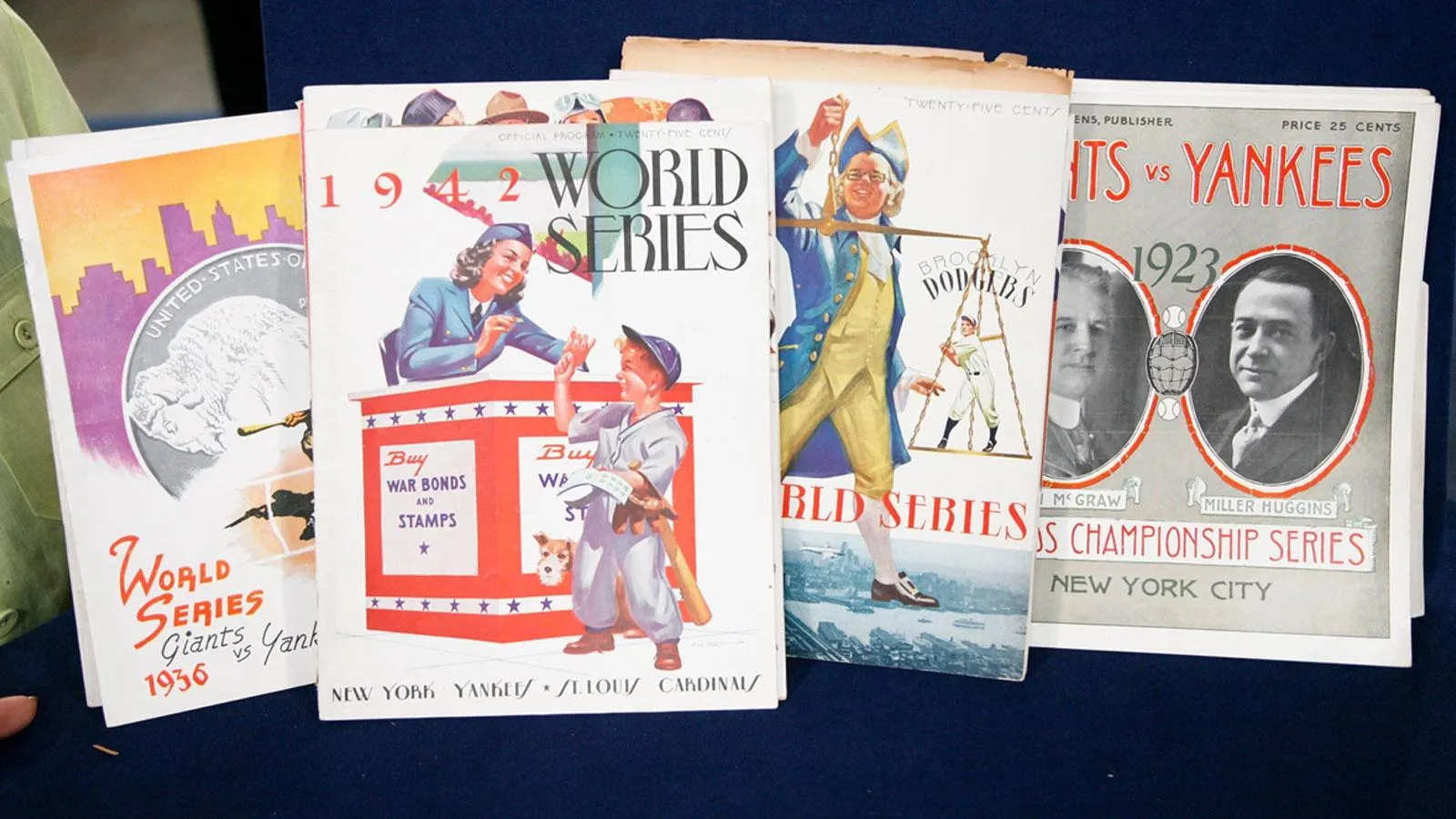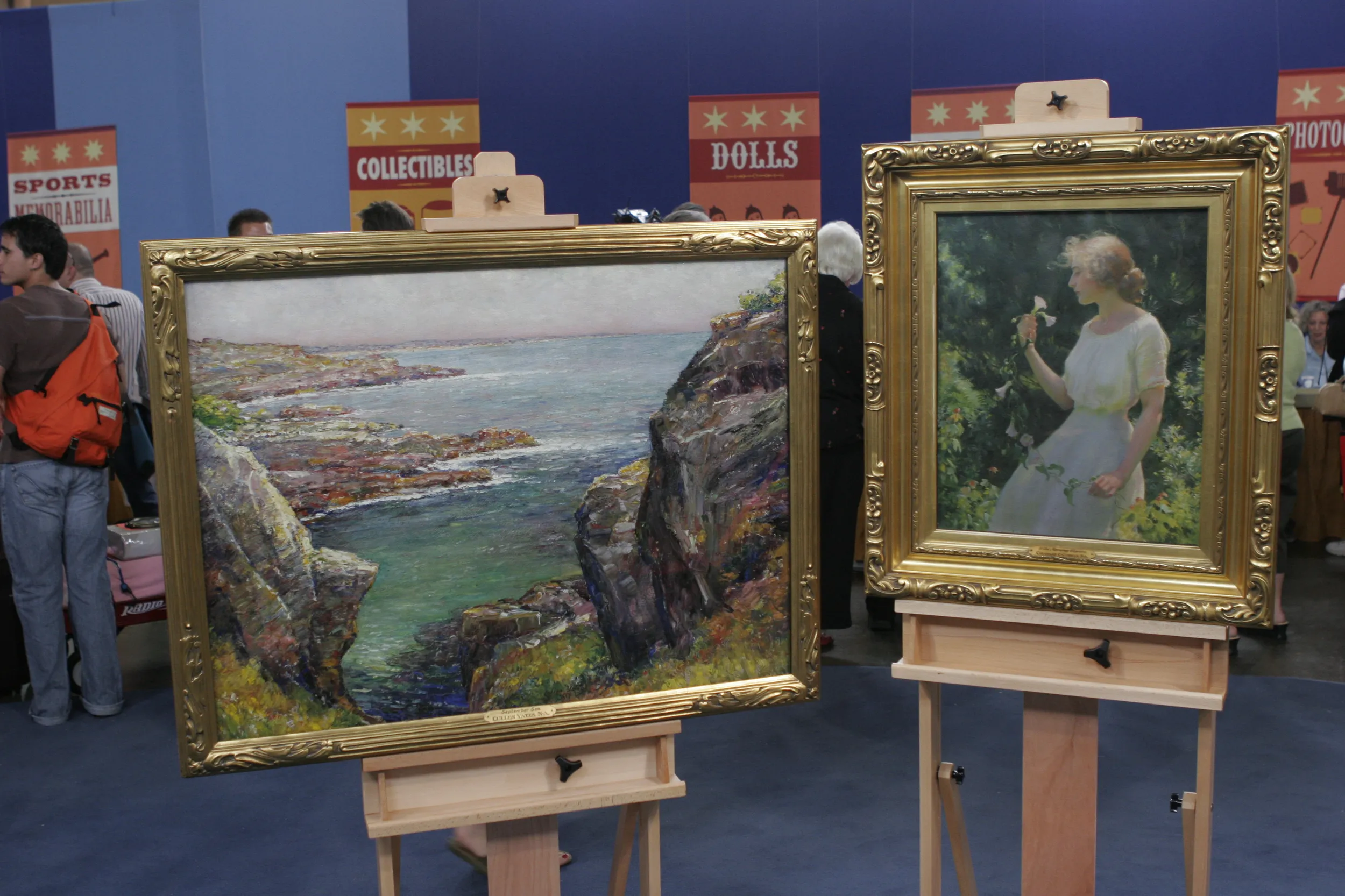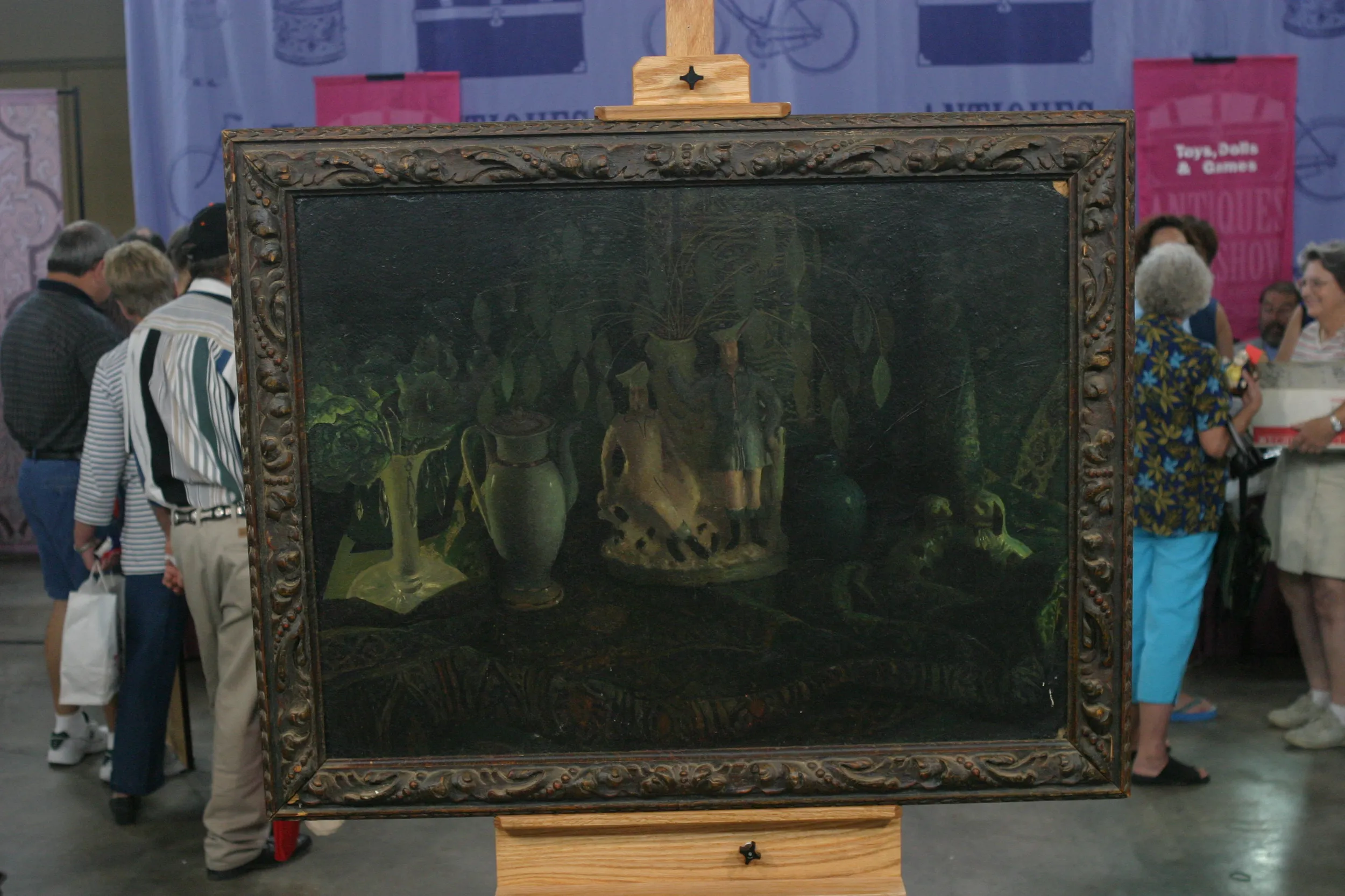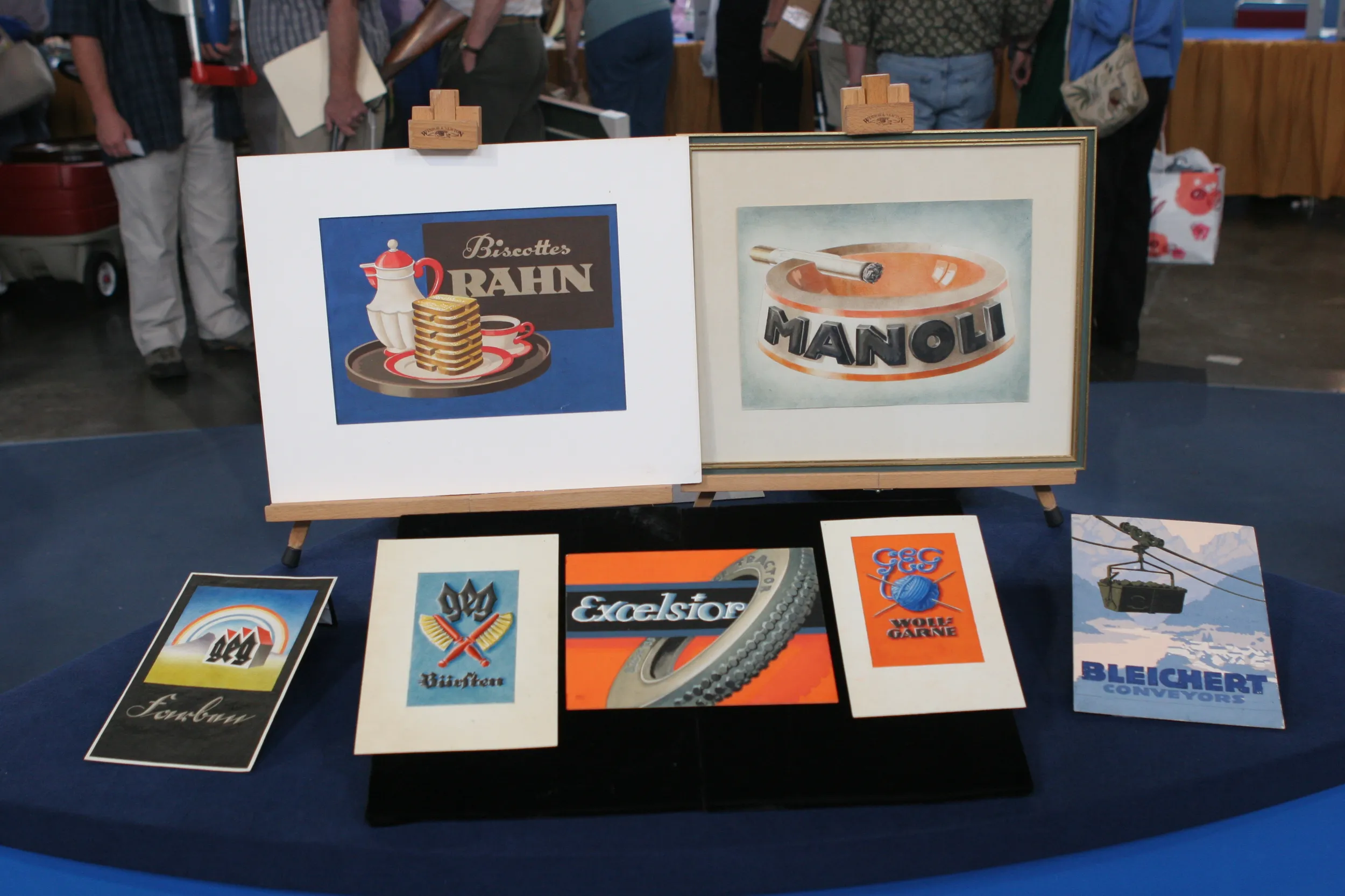GUEST: My mother got it, I think, from her mother.
APPRAISER: Mm-hmm.
GUEST: Or, or else she acquired it somewhere, but I... Somewhere in my mind, when I was a kid, I think it was my grandmother's.
APPRAISER: Well, the artist's name is Raimundo de Madrazo y Garreta. And he's a Spanish artist. His father was an artist, as well, and he's very famous for painting in the 19th century, early 20th century. He lived from 1841 to 1920. Although he's Spanish, he painted mainly in Paris and New York. He had a studio there. A lot of society people collected his works and were painted by him as a, as a portrait artist. Although this is not a portrait, this is a, a, a genre scene. Do you know what's going on in the scene?
GUEST: I'll let you tell me, 'cause you know better than I do.
APPRAISER: (chuckling) Okay, well, you've lived with it longer.
GUEST: That's true.
APPRAISER: Yeah, but it's two ladies having a, a little conversation over a love letter, but it's for a missing man. And it's probably this fellow up here. This is what's known in the art world as a pentimento. It's an Italian word. It's something that's not always clearly done. It might be ghostly in the back. It might be painted out at times. We have this little fellow looking over the balcony here. The balcony is not finished. You see here, there's a piece coming along there. And then it's a little bit faded at his hand here and his head up here. And this fellow is looking at what's going on down here. These, they're having a little confab down here about this little love letter. And, and you can almost hear the, the giggles.
GUEST: Yeah, yeah.
APPRAISER: Um, one of the things that Madrazo was most noticed for was his handling of really fancy dresses and pretty dresses, and, and you see that here.
GUEST: The lace...
APPRAISER: These, these, the lace and all that. He's, he's a fastidious worker and did fabulous lace. And that was good for the, the ladies at the time, for their, their portraits. So, added onto that, you get the flowers and these, these beautiful peacocks. So it's, it's all a bonus here. One thing that will hold it back is, it's put on Masonite. It's also a very dirty painting, but that can all be restored, be cleaned, and taken off that Masonite. Have you ever had any, uh, valuation on it, anyone tell you what it might be worth?
GUEST: Nothing. No, mm-mm, no. The big joke in the family was that was supposed to educate my kids.
APPRAISER: Yeah, send them through college?
GUEST: They got... Yeah, we've all, they've all, that's already done.
APPRAISER: (chuckling) That's done? Okay.
GUEST: Yeah, we got grandkids in college now.
APPRAISER: Okay. He's a very popular painter in the auction rooms. Of this type of painting, these realist, fancy dress paintings, he's one of the best practitioners. We've been talking about it at, at the table with my colleagues, and I was more conservative because of the condition. If I were to put this in an auction, I would probably put it at $60,000 to $80,000. My colleagues have said that it might even be as much as $70,000 to $90,000. So I think it definitely could, could make that. Probably, uh, not a full four-term, year at a college these days.
GUEST: No, no.
APPRAISER: But at least a year or two.
GUEST: Wow. Yeah, well, I have one granddaughter. That, that'll be nice-- then she can go.
APPRAISER: It's a beautiful painting. Um, I'm glad you brought it in.
GUEST: This is my mother's favorite, favorite painting of everything she ever had.











